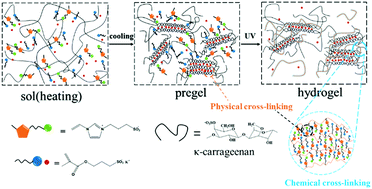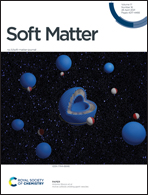Double-network hydrogels with adjustable surface morphology and multifunctional integration for flexible strain sensors†
Abstract
The next generation of high-performance flexible electronics has put forward new demands on the development of ionic conductive hydrogels. In recent years, many efforts have been made toward developing double-network (DN) hydrogels due to their excellent mechanical properties and unique network structures. However, profound challenges remain in achieving controllable surface morphology and multifunctional integration within DN hydrogels. In this work, we report the fabrication of a multifunctional DN hydrogel by multiple cross-linking between an innovative K+-containing poly(ionic liquid) (PIL) and κ-carrageenan. The resulting hydrogel possesses fascinating physicochemical properties, ranging from remarkable mechanical properties and machinability to adjustable surface morphology and superior adhesion ability. The extremely versatile DN hydrogels exhibited outstanding potential for the future of wearable strain sensors in real-time monitoring of human health, and the optimized design strategy opens new possibilities for the fabrication of multiscale structured and multifunctional integrated ionic conductive hydrogels.



 Please wait while we load your content...
Please wait while we load your content...